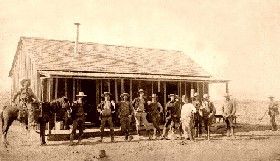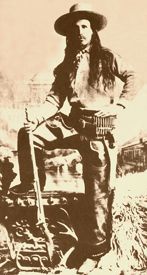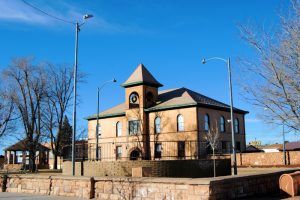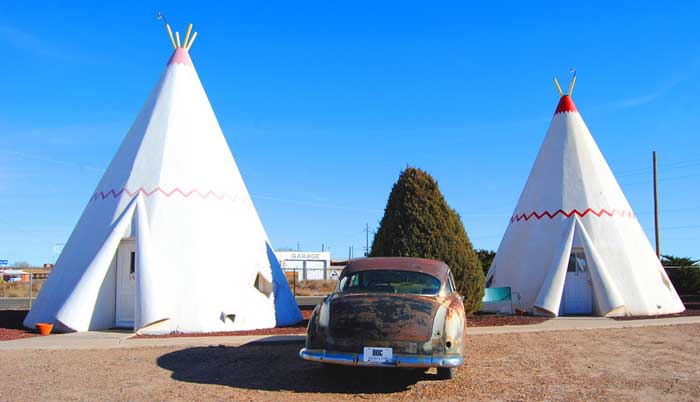Holbrook, Arizona, the county seat of Navajo County, began as a railroad town and later became a stop on Route 66, bringing new people and businesses.
In 1881, the Atlantic and Pacific Railroad laid its tracks through an area known as Horsehead Crossing. The following year, a railroad station was built, and the small settlement was called Holbrook in honor of H.R. Holbrook, the first chief engineer of the railroad. A year later, when the first post office opened, James H. Wilson became its first postmaster.
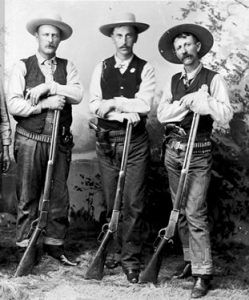
Hashknife Posse Members
Primarily called home to cowboys, cattle ranchers, and railroaders, the settlement soon took on all the vices of a typical Wild West town, complete with a saloon called the Bucket of Blood. Law and order were non-existent, gambling was popular, and painted ladies far outnumbered “proper women.”
In 1883, four men named Baca, Pedro Montano, F. W. Smith, and H.H. Scorse owned the land around the depot and filed a plat map laying out the streets of Holbrook, which remain essentially unchanged today.
Before long, Holbrook became a trade center for northern Arizona, where cattle, sheep, and wool were shipped by rail. On May 17, 1884, the first issue of the Holbrook Times was published, featuring advertisements for clothing, hotels, saloons, grocery stores, and other businesses.
In 1884, the Aztec Land and Cattle Company began operations in Holbrook, better known as the Hashknife Outfit. The second-largest cattle ranch in the U.S., the cattle company had some 60,000 head of cattle and employed hundreds of cowboys.
Holbrook initially welcomed the cattle company’s money and its associated cowboys until they saw what they were in for. The buckaroos of the outfit quickly gained the unsavory reputation of being the “thievinist, fightinest bunch of cowboys” in the United States. Many of the cowboys working for the Hashknife Outfit were wanted men, and on two occasions, they were linked to train robberies at Canyon Diablo.
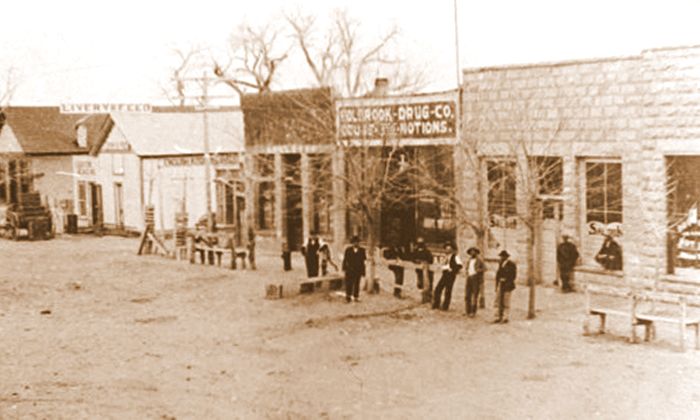
Holbrook, Arizona, in 1900.
The sudden presence of many cowboys also led to rustling, robbery, and gunfights. Much of the rustling was done against the Hashknife Outfit itself.
One such story is that a cowboy took off with a bunch of the outfit’s cattle and headed to Colorado. There, he set up a saloon with his profits. However, he was soon without money again and rejoined the outfit once more.
Stagecoach and train robberies became an almost recreational pastime for cowboys and drifters in the area. And, when the cowboys came off the range with money in their pockets and whiskey on their minds, it was time for Holbrook to “look out!” In 1886 alone, there were 26 shooting deaths on the streets of Holbrook, which was home to only about 250 people at the time.
It was sometime around this time that the St. Johns Herald reported: “The Salvation Army is going to visit Holbrook. A good field for operation.”
Law enforcement was needed in the settlement, and Sheriff Commodore Perry Owens is credited with bringing it to the wild and crusty town in 1887. It all started when a warrant was issued for cattle rustling against a man named Andy Cooper. Cooper was one Andy Blevins, who had changed his name when he came to Arizona because of an outstanding warrant for murder in Texas.
When Owens went to the Blevins family home on September 4, 1887, the family was in the midst of Sunday dinner, and Cooper, a/k/a Blevins, refused to come out. Within moments, Andy’s half-brother, John, opened the door and shot at the sheriff, who quickly drew both of his six guns, sending bullets into both John and Andy. A gunfight inevitably ensued, and Sam Blevins, just 15 years old, ran out the door firing at Owen, who returned the shots. A friend of the Blevin family, Mose Roberts, also fired upon the Sheriff.
The melee, lasting less than a minute, left Andy, Sam Blevin, and Mose Roberts dead. John Blevins was wounded. Today, the historic site of the gunfight still stands on Central Avenue in Holbrook.
In 1888, Holbrook was struck by fire, nearly destroying every city building. However, this town of hardy pioneers rebuilt and continued to grow.
Though still lawless, Holbrook gained the honor of the county seat in 1895, and just three years later, a new courthouse was built. This historic building, listed on the National Register of Historic Places, continues to stand today, operating as the Holbrook Visitor Center and Museum.
By 1914, Holbrook was the only county seat in the U.S. without a church. However, it did have one of the famous Fred Harvey Restaurants housed in several old boxcars on a rail siding.
By the time Route 66 appeared, the wild and lawless town had become more settled, and the narrow strip of asphalt symbolized hope to the city and the many travelers of the Mother Road.
When World War II ended, the gas shortage was over, and tourism in the city flourished. During this time, dozens of other souvenir shops, including the PowWow Trading Post, opened, offering samples of petrified wood and Indian Treasures. In 1950, the Wigwam Village was built, which continues to serve customers today. Stop at Joe and Aggie’s Cafe in the center of town or Romo’s Cafe across the street when you need to sate your appetite.
Today, this city of a little more than 5,000 souls offers an excellent opportunity to explore Navajo, Hopi, and Apache country, the nearby Painted Desert, Petrified Forest National Park, and its many Route 66-era icons.
If you’re traveling Route 66, don’t forget to check out the Geronimo Trading Post just outside of town before heading down the old Mother Road to Joseph City and Winslow, Arizona.
©Kathy Alexander/Legends of America, updated November 2025.
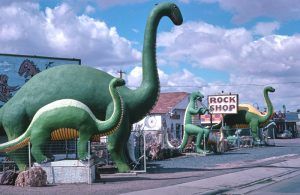
An Indian Rock Shop in Holbrook, Arizona by John Margolies, 2003.
Also See:
Arizona Route 66 Photo Gallery
The Aztec Cattle Company & the Hashknife Outfit
History & Haunting of the Navajo County Courthouse
See Sources.


